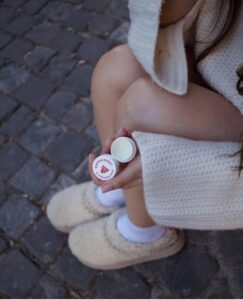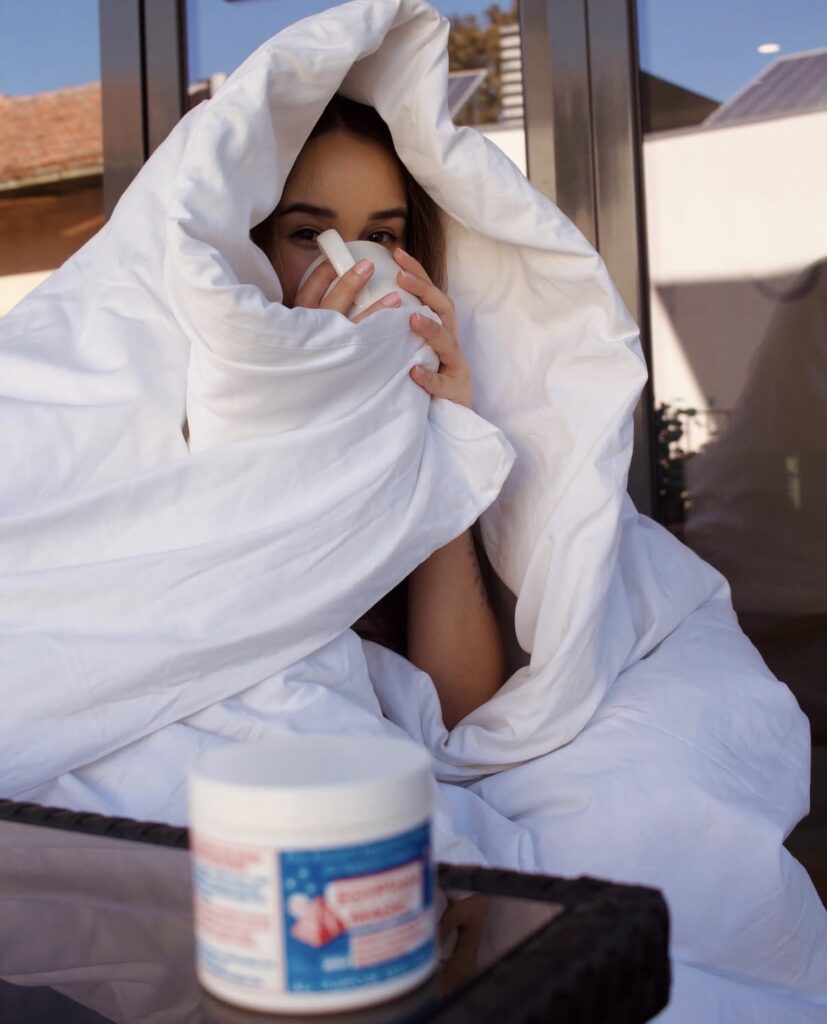your cold weather skin guide
The first whisper of winter air brings excitement for cozy sweaters and holiday gatherings. The secret to maintaining healthy, radiant skin through cooler months lies in gentle preparation and the perfect timing of November action.
Natural ingredients, applied consistently and lovingly, create a protective embrace that synthetic formulations cannot match. Today, as we face crisp winters and heated indoor environments, their power becomes more precious than ever.
Your skin’s winter resilience doesn’t depend on reacting to changes—it depends on building strength before cool weather settles in. This is why November isn’t just another month in your skincare calendar; it’s your skin’s secret to thriving through winter’s embrace.

Understanding How Winter Affects Your Skin
Understanding winter’s impact begins at the cellular level, where cool temperatures and low humidity create unique challenges requiring gentle attention. Research published in dermatology journals reveals that low humidity and cool temperatures naturally decrease skin barrier function while increasing sensitivity.
Your skin’s protective barrier works optimally in specific environmental conditions. When humidity drops below 40% and temperatures cool, this barrier begins to need extra support. The connections between skin cells become more delicate, creating opportunities for moisture to evaporate.
Winter’s effects are particularly noticeable on facial skin. Studies show winter affects facial skin more noticeably than body skin, largely because we protect our faces while bundling up our bodies. Your face experiences the seasonal transition between heated indoor spaces and refreshing outdoor conditions.
Indoor heating systems create additional considerations. Forced air heating naturally reduces moisture from both the environment and your skin, creating desert-like conditions inside your home. This dual experience—crisp, dry outdoor air and artificially heated indoor air—creates a 24-hour cycle that requires thoughtful skin support.

Trans-epidermal water loss, the natural process of moisture evaporation through skin, increases during cool, dry conditions. In healthy skin, this process is beautifully regulated by barrier function. But when winter conditions require extra barrier support, water loss can increase by 25%, leading to tight, delicate sensations.
Perhaps most interesting is how skin’s natural protective mechanisms adapt during cooler weather. Sebum production naturally decreases in cool weather, natural moisturizing factors become less active in low humidity, and blood circulation adjusts, changing how nutrients reach skin cells. Without loving intervention, these natural processes leave your skin ready for extra care.
Understanding this beautiful complexity is the key to effective preparation. When you know that your skin barrier begins adapting before you notice visible changes, you can provide loving support during the critical window when protection creates the most benefit.
Why November Is Your Skin’s Perfect Preparation Window
November represents a precious opportunity that most people miss entirely. While the calendar might say autumn, your skin is already receiving the first signals of seasonal change, making this the optimal time to strengthen resilience before cooler conditions fully arrive. Dermatologists recommend starting winter skincare preparation early, emphasizing that nurturing preparation requires time to build effectiveness.
The beautiful advantage of November preparation lies in cellular biology and timing. Your skin barrier doesn’t transform overnight—it requires 6-8 weeks of consistent, supportive care to build the resilience necessary to embrace peak winter conditions gracefully. Starting your winter regimen in November allows your skin to strengthen naturally, adapting to richer formulations before they become essential.
Dr. Shasa Hu recommends upgrading to nourishing moisturizer before cool weather arrives, noting that reactive approaches often struggle because stressed skin cannot absorb and utilize protective products as effectively as healthy skin.
The economics of preparation versus treatment tell an inspiring story. Preparation costs less in time, money, and discomfort than treating stressed skin. A November skincare upgrade might require an initial investment in quality products, but it prevents the expensive cycle of purchasing multiple remedies and professional interventions that winter skin stress often requires.
November’s moderate temperatures provide the ideal transition period for skin adaptation. Starting too early can lead to product heaviness, while starting too late requires skin to adapt to protective formulations while already under stress. November’s transitional climate allows skin to gradually adjust to richer textures and more intensive ingredients.

Building skin resilience is fundamentally a process that requires consistent application over time, particularly when using natural ingredients that work gently rather than providing instant but temporary relief. Natural formulations like beeswax, olive oil, and honey strengthen skin barrier function through cumulative cellular support, building protective capacity that synthetic ingredients cannot match.
The preparation mindset that November timing cultivates extends beyond skincare into overall wellness philosophy. When you start your winter preparation early, you’re choosing empowerment over reactivity, strength over survival, resilience over rescue.
Expert-Recommended Winter Preparation Essentials
The dermatology community has reached clear consensus on fundamental principles of winter skin preparation, providing a science-backed roadmap that emphasizes gentle protection over intensive intervention. 8 winter skincare tips from dermatologists form the foundation of professional winter skin protection.
The cornerstone centers on switching to gentle, hydrating cleansers that preserve rather than strip your skin’s natural protective elements. Traditional foaming cleansers can be too enthusiastic for winter-sensitive skin. Dermatologists recommend formulations containing ceramides and glycerin—ingredients that clean while simultaneously supporting barrier function and moisture retention.
Upgrading to nourishing moisturizers represents the most important element of professional winter preparation recommendations. Expert winter skincare guide emphasizes that winter moisturizers should contain multiple barrier-supporting ingredients, including hyaluronic acid for deep hydration, ceramides for barrier repair, and occlusive agents that prevent water loss.
Environmental modifications play an equally important role. Installing humidifiers to maintain 40-60% indoor humidity levels counteracts the drying effects of heating systems while supporting your skin’s natural functions. This environmental approach recognizes that skincare products alone cannot overcome severely compromised environmental conditions.
Water temperature and exposure time become gentle factors that many people overlook. Dermatologists recommend mindful shower time and temperature to preserve natural oils. Very warm water can reduce these protective oils more than lukewarm water, while extended exposure increases trans-epidermal water loss.

Sunscreen application takes on new importance during winter months, as UV rays reflecting off snow can be more intense than direct summer sun exposure. Dermatologists recommend applying broad-spectrum SPF 30+ sunscreen daily, even on cloudy days.
Professional winter preparation extends beyond individual product choices to encompass routine consistency and seasonal adaptation strategies. Dermatologists emphasize that winter skincare success depends more on consistent daily application than on expensive or complex formulations.
The Beautiful Power of Natural Ingredients in Cool Weather Protection
Natural ingredients possess unique properties that make them particularly wonderful for winter skin protection, working in harmony with your skin’s inherent functions. The role of beeswax in supporting skin barrier demonstrates how this natural ingredient creates protective coverage that reduces water loss by up to 30% while still allowing skin to breathe.
Beeswax represents one of nature’s most sophisticated barrier-protection systems. When applied to human skin, beeswax forms a protective embrace that mimics and supports the skin’s natural barrier function. Comprehensive research on beeswax in skincare confirms that beeswax provides occlusive protection without comedogenic effects, making it ideal for facial application.
The molecular structure of beeswax allows it to integrate gracefully with your skin’s lipid barrier, essentially becoming part of your protective system rather than sitting on top as an artificial layer. Unlike petroleum-based occlusives that can interfere with natural skin functions, beeswax maintains antimicrobial properties while supporting healthy cellular renewal.
Olive oil’s contribution to winter protection extends far beyond simple moisturization, providing essential fatty acids that support skin barrier function. Extra virgin olive oil contains rich concentrations of oleic acid, linoleic acid, and other fatty acids that beautifully mirror the composition of healthy skin barriers.
Honey’s therapeutic benefits for skin protection have been documented across cultures and centuries. Honey as therapeutic agent for skin wellness demonstrates honey’s ability to support healing, reduce inflammation, and maintain skin health under various conditions.
The humectant properties of honey make it particularly valuable for winter protection, as it draws moisture from the environment and holds it against the skin even in low-humidity conditions. Unlike synthetic humectants that can sometimes pull moisture from deeper skin layers when environmental humidity is extremely low, honey’s complex carbohydrate structure provides sustained hydration.

Royal jelly and bee pollen contribute additional protective and nutritive elements that support skin resilience during environmental changes. Royal jelly contains proteins, amino acids, and B-vitamins that support cellular repair and regeneration processes. Bee pollen provides trace nutrients and antioxidants that support overall skin health and natural resistance to environmental influences.
The synergistic interaction between these natural ingredients creates protection that exceeds individual component benefits. When combined in proper proportions, beeswax, olive oil, honey, royal jelly, and bee pollen work together to create multi-layered protection that addresses different aspects of winter skin needs simultaneously.
Natural ingredients work gradually and cumulatively, building skin resilience over time rather than providing temporary symptom relief. This gradual strengthening approach aligns perfectly with November preparation timing, allowing skin to adapt and strengthen throughout the transition period.
Understanding the beautiful power of these natural ingredients in cool weather protection sets the stage for creating a comprehensive winter skincare approach that celebrates your skin’s natural ability to thrive in challenging conditions.
Embracing Winter Confidence Through Natural Protection
As November’s preparation window draws to a close and winter’s full beauty approaches, the foundation you’ve built through strategic skincare preparation will prove its worth in ways that extend far beyond simple moisture retention. The science behind winter skin changes, the strategic advantage of early preparation, and the power of natural protection converge to create something more valuable than healthy skin—they create the confidence to embrace winter rather than merely endure it.
The journey from reactive concern to proactive skin strengthening represents a fundamental shift in how you approach seasonal changes. Instead of worrying about winter’s arrival, you enter the season from a position of strength, armed with knowledge about your skin’s needs and equipped with natural tools that work in harmony with your body’s inherent protective systems.
Egyptian Magic’s five-ingredient formula embodies the perfect synthesis of ancient wisdom and modern understanding, providing the comprehensive protection that dermatologists recommend through ingredients that nature perfected long before synthetic alternatives existed.

The multi-purpose nature of natural protection eliminates the complexity that often undermines good skincare intentions. When one product can effectively protect your face, care for your hands, and heal your lips, consistency becomes achievable even during the busiest winter schedules.
Looking ahead to the months between now and spring, your skin will face environmental changes that increase in intensity as weather conditions become more variable. The protective foundation you’ve built through November preparation will support you through crisp winds, cool temperatures, heated indoor air, and the daily stresses that winter brings to every aspect of life.
The investment you’ve made in understanding winter skin science, timing your preparation correctly, and choosing natural protection over synthetic alternatives will pay dividends not just in skin health, but in overall comfort and confidence throughout the winter season. When your skin feels healthy and resilient, it contributes to energy levels, mood stability, and the sense of wellbeing that makes winter enjoyable rather than merely endurable.
As you move forward into winter armed with knowledge, preparation, and natural protection, remember that healthy winter skin is not a luxury—it’s an achievable goal that requires only the right timing, the right approach, and the right tools.
Don’t Wait for Winter to Surprise Your Skin
Start your winter protection today with Egyptian Magic’s time-tested, dermatologist-supported natural formula. Your skin will thank you and will be glowing when January arrives.
Shop Egyptian Magic Winter Protection – Experience the natural barrier protection your skin deserves. Begin building your winter resilience now, while preparation is still possible and your skin can adapt gradually to the protection it needs. The difference between preparation and reaction is the difference between winter confidence and winter dry skin.
